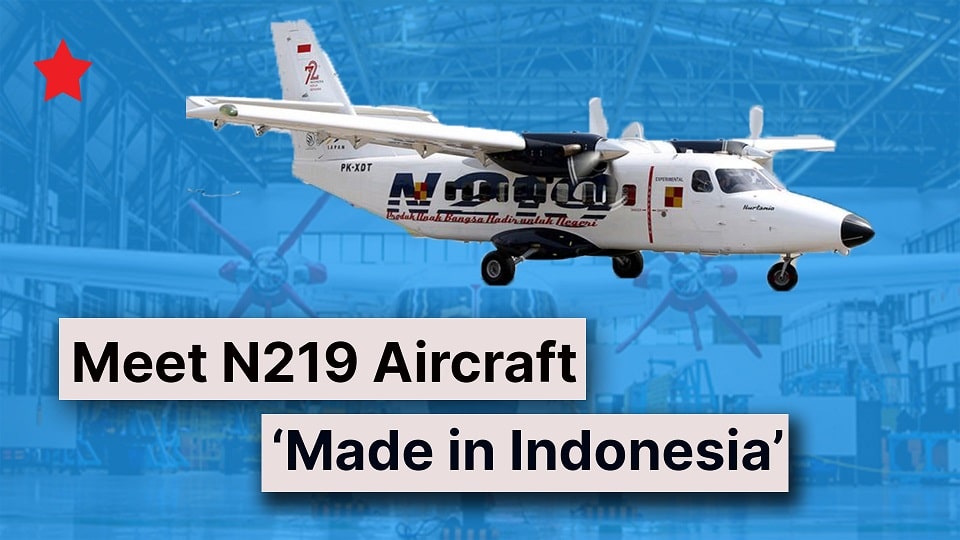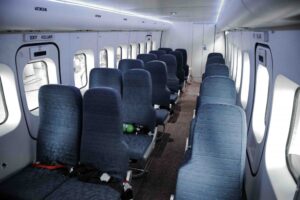Aerospace
N219 Nurtanio is an Indonesian-built aircraft : Specification, Range & Seats

Welcome back to Jetline Marvel. Did you know that Western nations are more dominant in the aviation industry. because they put a greater priority on research and development, and are skilled at producing high-quality aircraft, based on their experiences. However, despite having a lesser budget project, one country is currently progressively spreading out its aviation technology, and they are doing their best to create their own aircraft. Yes, we’re talking about Indonesian-made N219 planes. It all began in 2006, when they decided to build and manufacture this versatile aircraft.
PT Dirgantara is a corporation located in Indonesia. PTDI has effectively developed and grown its competence as an aerospace industry. since its establishment in 1976 as a state-owned enterprise in Bandung, Indonesia.
Let’s speak about the N219 aircraft, which is a new generation multi-purpose aircraft with the largest cabin cross section in its class, a proven and efficient engine, modern avionics system, fixed tricycle landing gear, and a wide cargo door to make changing aircraft configuration easier. As a result, N219 Nurtanio is designed to give operators with technical and economic benefits.
This aircraft may be employed for a variety of missions, including passenger and troop transport, freight and medical supplies, surveillance, and patrolling.
The aircraft is 16.49 metres in length, 19.5 metres in wingspan, and 6.18 metres in height.
The maximum take-off weight of this aircraft is 7,030 kg, while the fuel capacity is 1,600 kg. It has a maximum range of 890 kilometers and a payload of 2,313 kg.
What is the Boeing P-8I in the Indian Navy used for?
It has a takeoff distance of 435 metres and a landing distance of 509 metres. It has a top speed of 390 kilometres per hour and a stall speed of 109 kilometers per hour. It has a ceiling altitude of up to 24000 feet and can operate at a height of 10,000 feet. it has Climbing speed 9.85 meters per second.
JM Exclusive tour onboard the EMBRAER E195-E2 Demonstrator.
Two Pratt & Whitney turboprop engines power this aircraft. can generate up to 630 kW The propeller is a four-bladed Hartzell
PERFORMANCE
|
In 2019, six aircraft were expected to be produced, expanding to 16 at 2020 and 36 per year in a new $90-100 million facility financed by equity participation, private-public partnerships other investor.
First A319neo flight with 100% sustainable aviation fuel
The selling price of N219 aircraft, according to PTDI‘s Production Director, Arie Wibowo, is in the region of US $ 6 million per unit, or roughly Rp 81 billion.
Prior to local certification, PT Dirgantara Indonesia (PTDI) has received orders for 120 of its N219 multi-purpose utility turboprops.
Embraer launches freighter conversion programme

Aerospace
When Ratan Tata was denied entry to the airfield at the Aero India show, he waited

During our visit to Aero India 2019, we had the unexpected opportunity to see Ratan Tata at the event, which was a thrilling moment for us. However, there was a surprising hiccup when the security staff didn’t allow him to enter due to a lack of a security pass.
Despite this, he remained calm and patiently waited for about 20 minutes until a member of the Tata team brought him the required pass, after which he calmly proceeded inside. It was a humbling sight, showcasing his composed demeanor even in such situations.
Ratan Tata ji is not only a renowned industrialist but also a trained pilot, holding a pilot’s license. In 2007, he became the first Indian civilian to fly the F-16 Falcon during the Aero India show in Bangalore—a proud moment for the nation.
His passion for aviation extended beyond flying, as he played a key role in shaping India’s aerospace industry. Under his leadership, Tata ventured into manufacturing and maintaining aerospace components while upholding its legacy of quality. Notably, Tata’s collaboration with Airbus to develop and manufacture the C295 aircraft is a testament to its growing influence in the sector.
-

 Aviation2 months ago
Aviation2 months agoMicrosoft Flight Simulator Raises $3 Million to Bring Back the An-225 Mriya
-

 Airlines2 months ago
Airlines2 months agoQatar Citizens Can Travel to the United States Without a Visa
-

 Aviation2 months ago
Aviation2 months agoQatar Airways bans these new Electronic Devices on plane
-

 Airlines2 months ago
Airlines2 months agoJapan Airlines Rolls Out Free Domestic Flights to International Passengers
-

 Defence2 months ago
Defence2 months agoWhich Country Has the Largest Fleet of Fighter Aircraft?
-

 Airport2 months ago
Airport2 months agoWestern Sydney Airport Welcomes Its First Plane After 6 Years of construction
-

 Travel2 months ago
Travel2 months agoQatar Airways Launches Four Additional Flights from Amsterdam
-

 Aviation2 months ago
Aviation2 months agoDid you know ? Once Boeing 747 carried 1088 passenger in 1991









